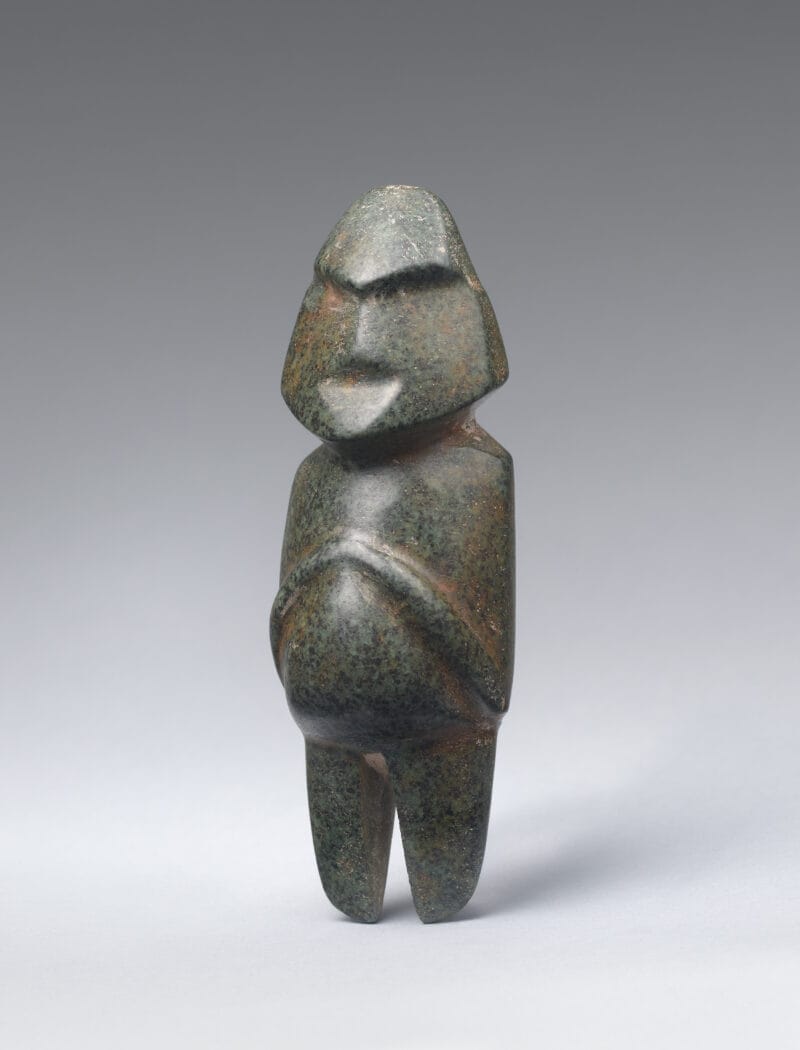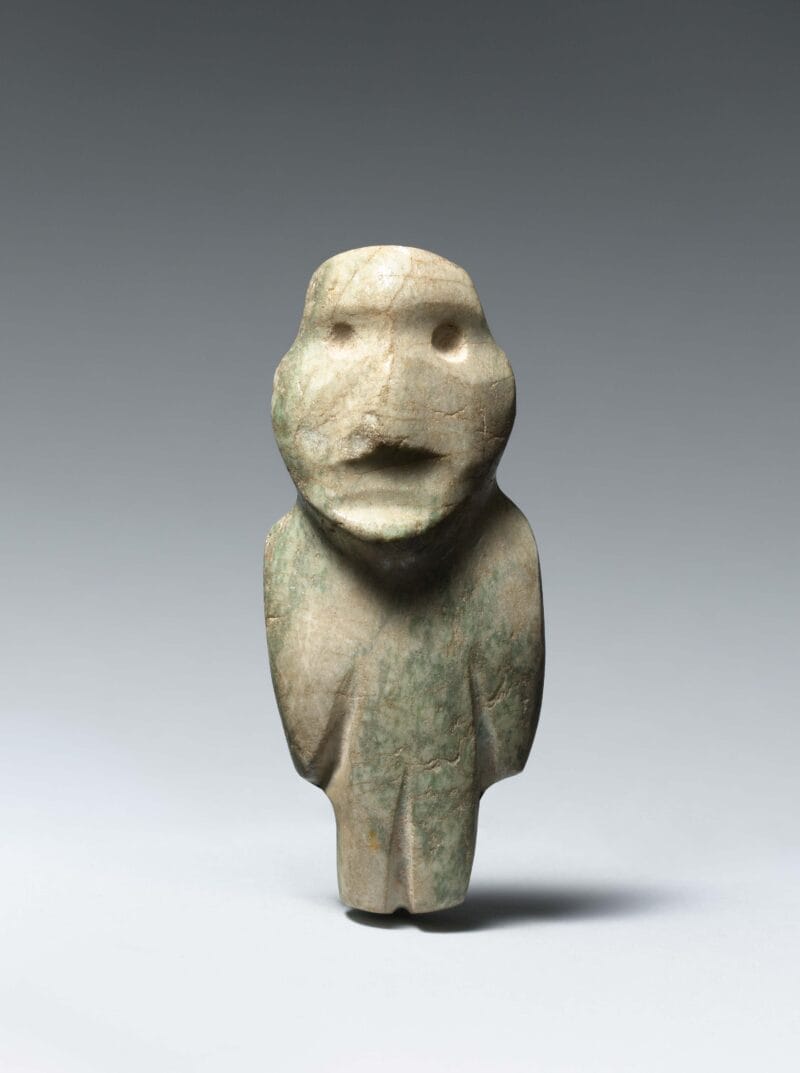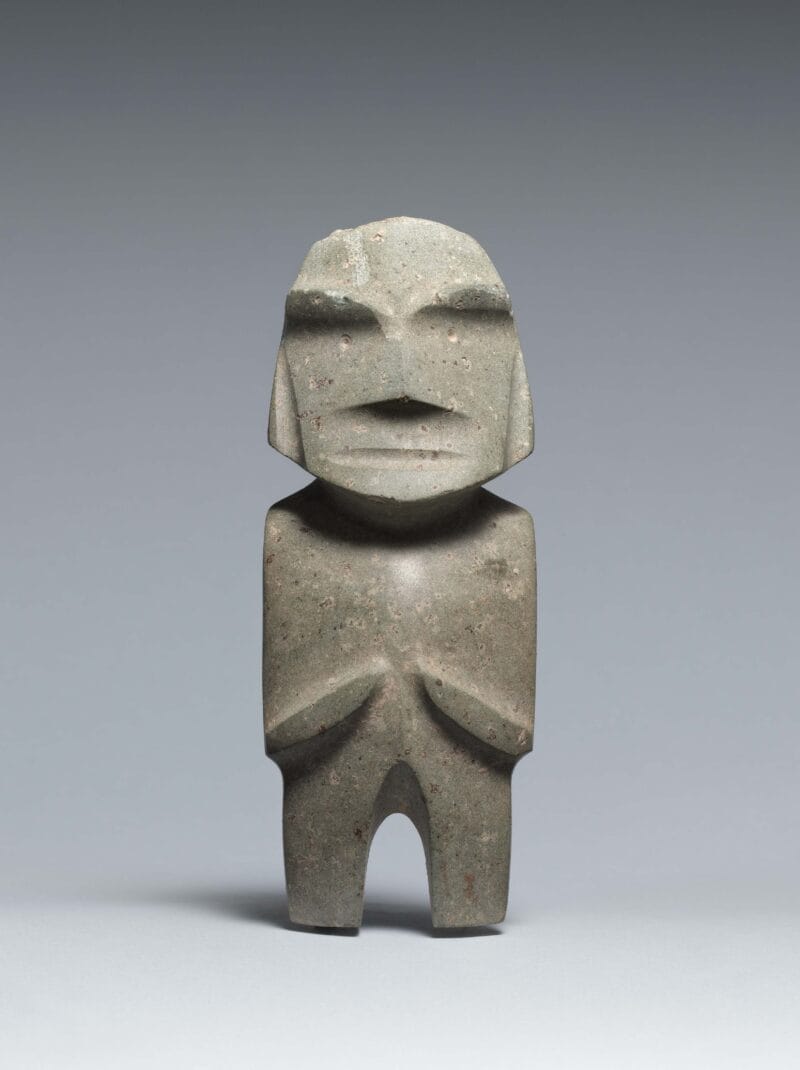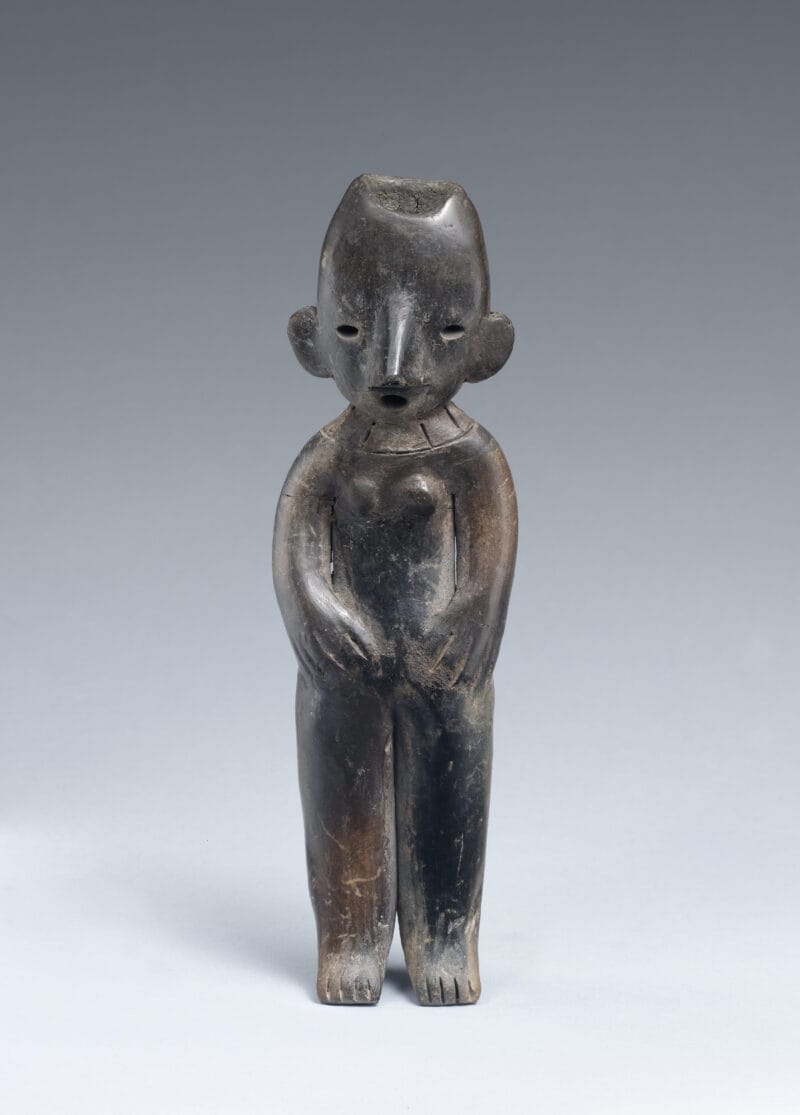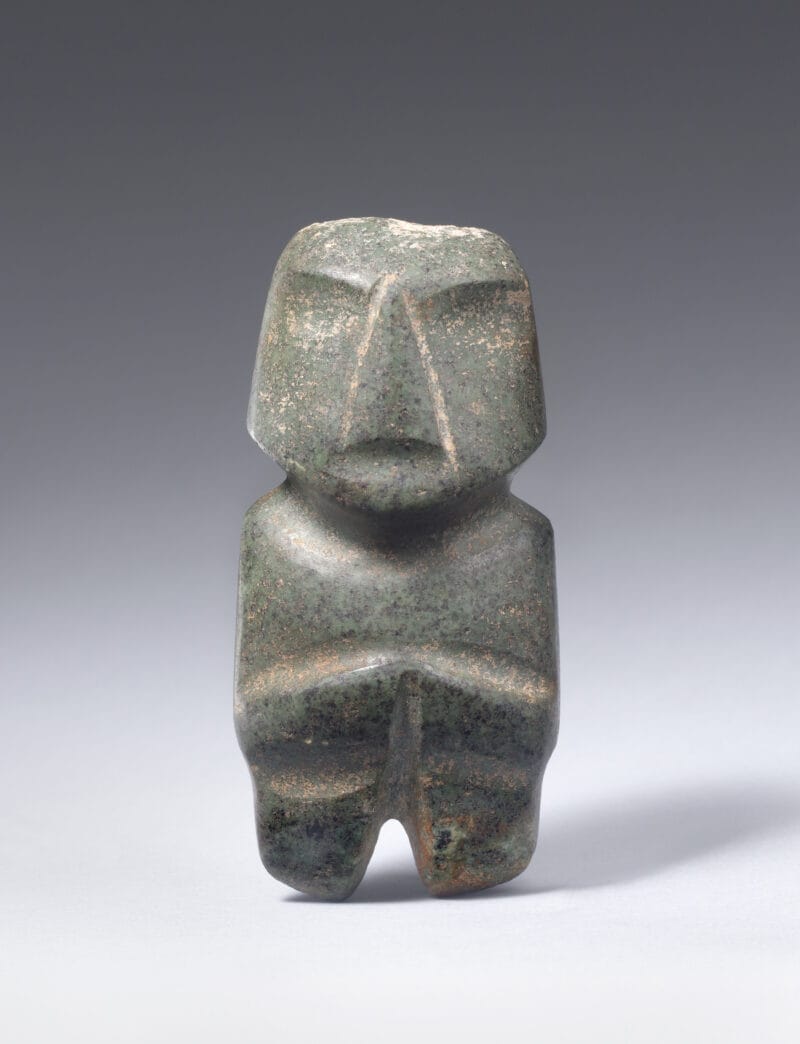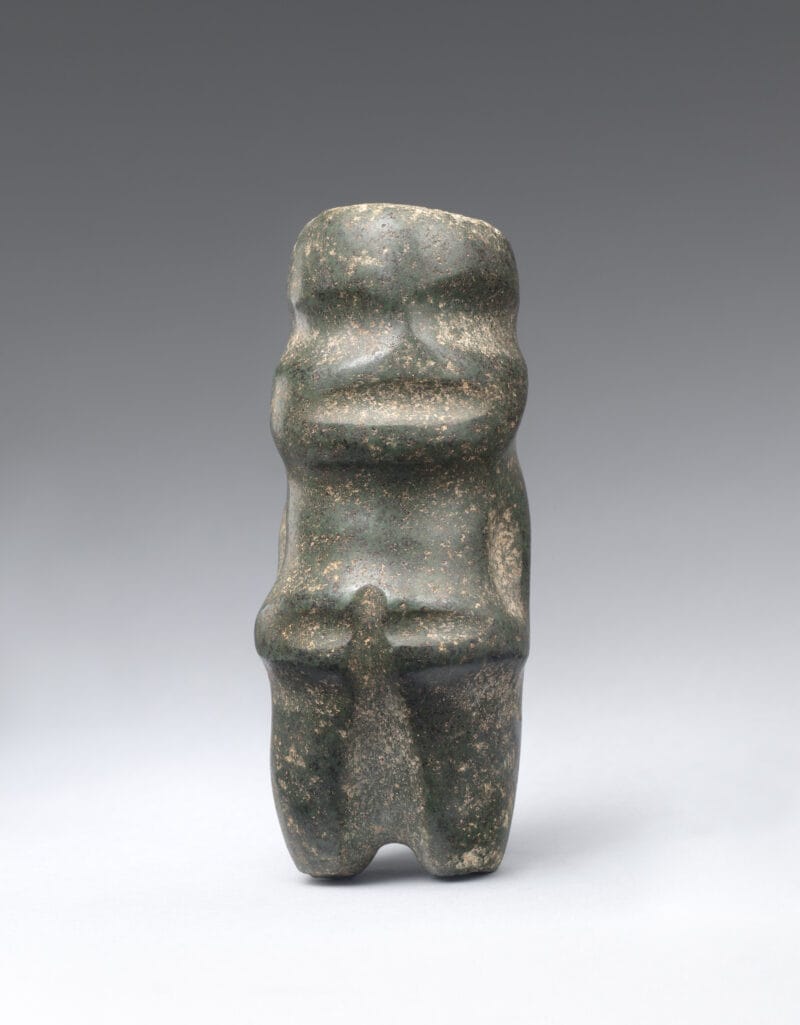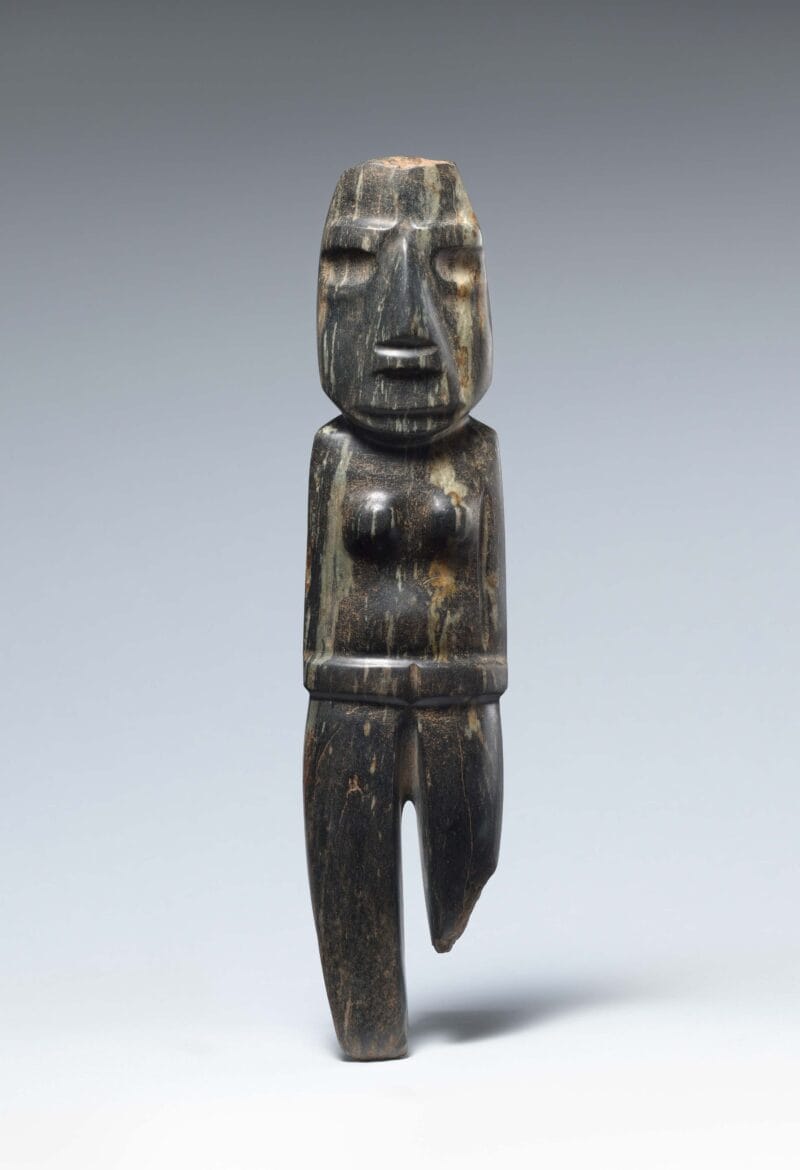
About the Object
The process of refashioning this object from a celt, or hand axe, into a standing female figure may have weakened the original blade, which contributed to breaking the figure’s now-lost left leg. This remarkable work has rounded eyes that were most likely carved using abrasive sandstone tools and other chipping or lapidary techniques. Like other Mezcala figures, it has a flat head, no ears, small mouth, and prominent eyebrows. It also shows similarity to the related Chontal material culture through the long and triangular shape of the nose ridge. The unknown creator of this work has also used the natural change of color in this piece to make the figure even more striking.
Additional Information
This work was most likely associated with funeral practices in what is now the Mexican state of Guerrero, but a great deal of information remains unknown about the Mezcala-Chontal tradition due to a lack of archaeological excavation and analysis. However, scholarship has begun to help piece together more about these societies.
[Throckmorton Fine Art, New York, NY];
The Jan T. and Marica Vilcek Collection, 2005-2010;
Gift to The Vilcek Foundation, 2010;
Related Objects
You may also be interested in
Graywolf Press

Juan Pablo Contreras composes classical music with the sounds of Mexico

Felipe Baeza


